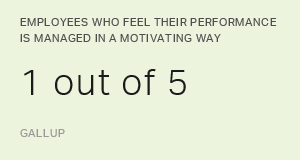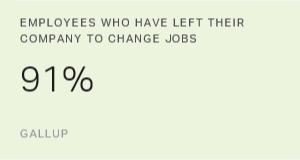The twelve key dimensions that describe great workgroups (part 5)
Praise and recognition are essential building blocks of a great workplace. We all possess the need to be recognized as individuals and to feel a sense of accomplishment. There is nothing complicated about recognition, but it is one of the items that consistently receives the lowest ratings from employees.
Taking the time to recognize and praise good performance is one of the 12 key discoveries from a multiyear research effort by The Gallup Organization. Our objective was to identify the consistent dimensions of workplaces with high levels of four critical outcomes: employee retention, customer metrics, productivity, and profitability. The research identified 12 dimensions that consistently correlate with these four outcomes -- dimensions Gallup now uses to measure the health of a workplace. An associated research effort, in which Gallup studied more than 80,000 managers, focused on discovering what great managers do to create quality workplaces.
Historically, we handle praise and recognition from the perspective of "If you don't hear anything, assume you're doing a good job." In contrast to this "old industrial workplace" mindset, the new knowledge-based worker relies upon praise and recognition to determine the values of the organization. Today, praise and recognition are communication vehicles for that which is deemed important.
Obviously, recognition can be either positive or negative. Gallup has found, however, that positive and negative recognition are not opposites. Instead, the opposite of any kind of recognition is being ignored. The worst possible thing we can do to someone at work is to ignore any employee. Workplaces that continue to abide by the old culture ("If you don't hear anything, . . . ") will destroy the very human spirit that makes the true difference in quality output and service delivery.
Although recognition can be either positive or negative, effective recognition has the following characteristics: it is positive in nature, immediately connected to performance, specific about what is being praised, and close to the action. Many organizations have formal recognition programs that have limited effectiveness. This is probably because these programs do not always give employees a clear idea of what, exactly, is being recognized -- such as profit, growth, or productivity.
We often think positive recognition comes only from supervisors or managers, but Gallup has found that employees cherish praise and recognition from peers. Coworkers know intimately the particulars of a job and when they notice excellence, it is a special event. So, the best praise and recognition may not come from the top down -- it may come from a peer recognition program.
In next week's column, we explore Item 5 of 12: "My supervisor, or someone at work, seems to care about me as a person."


